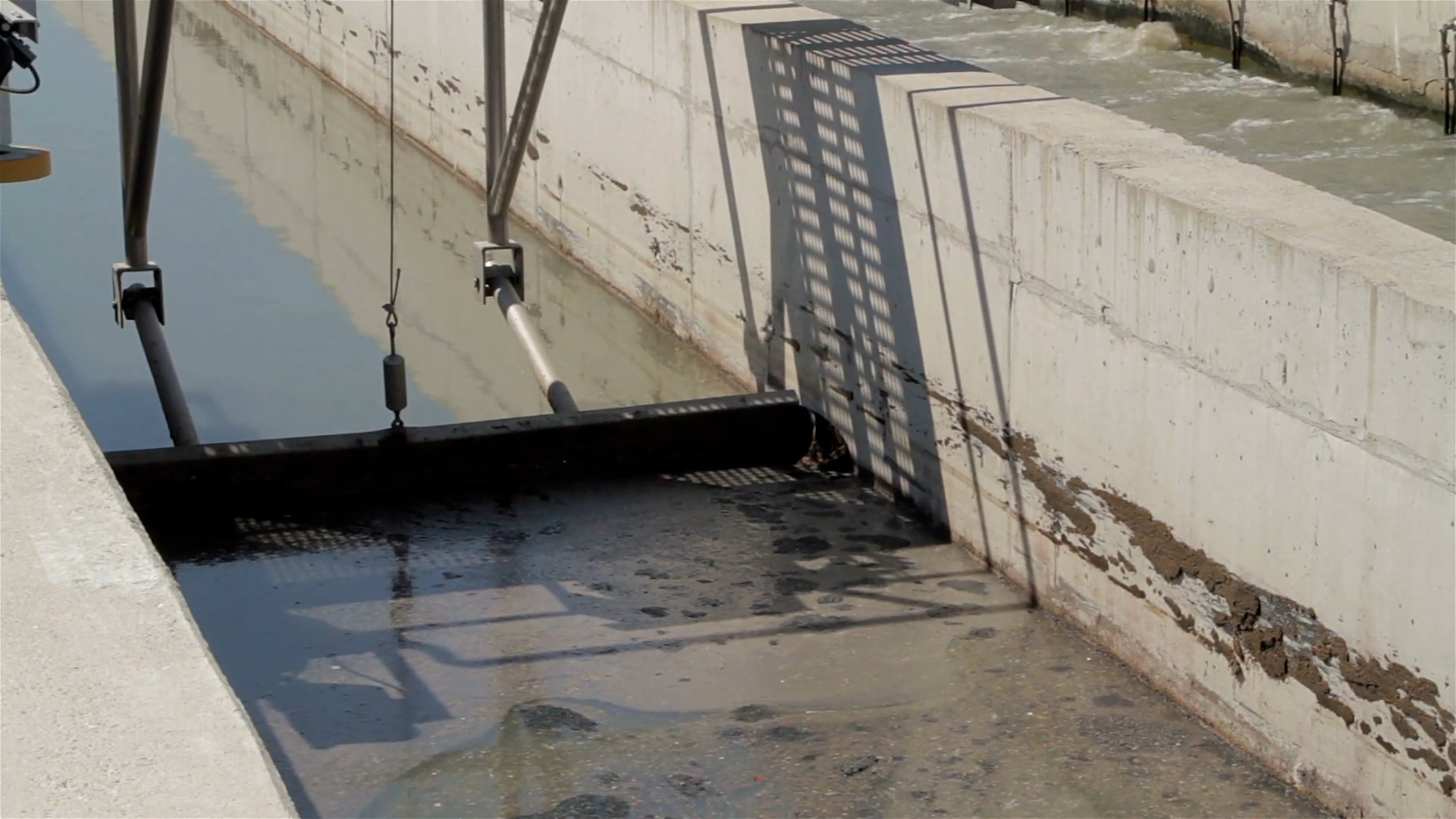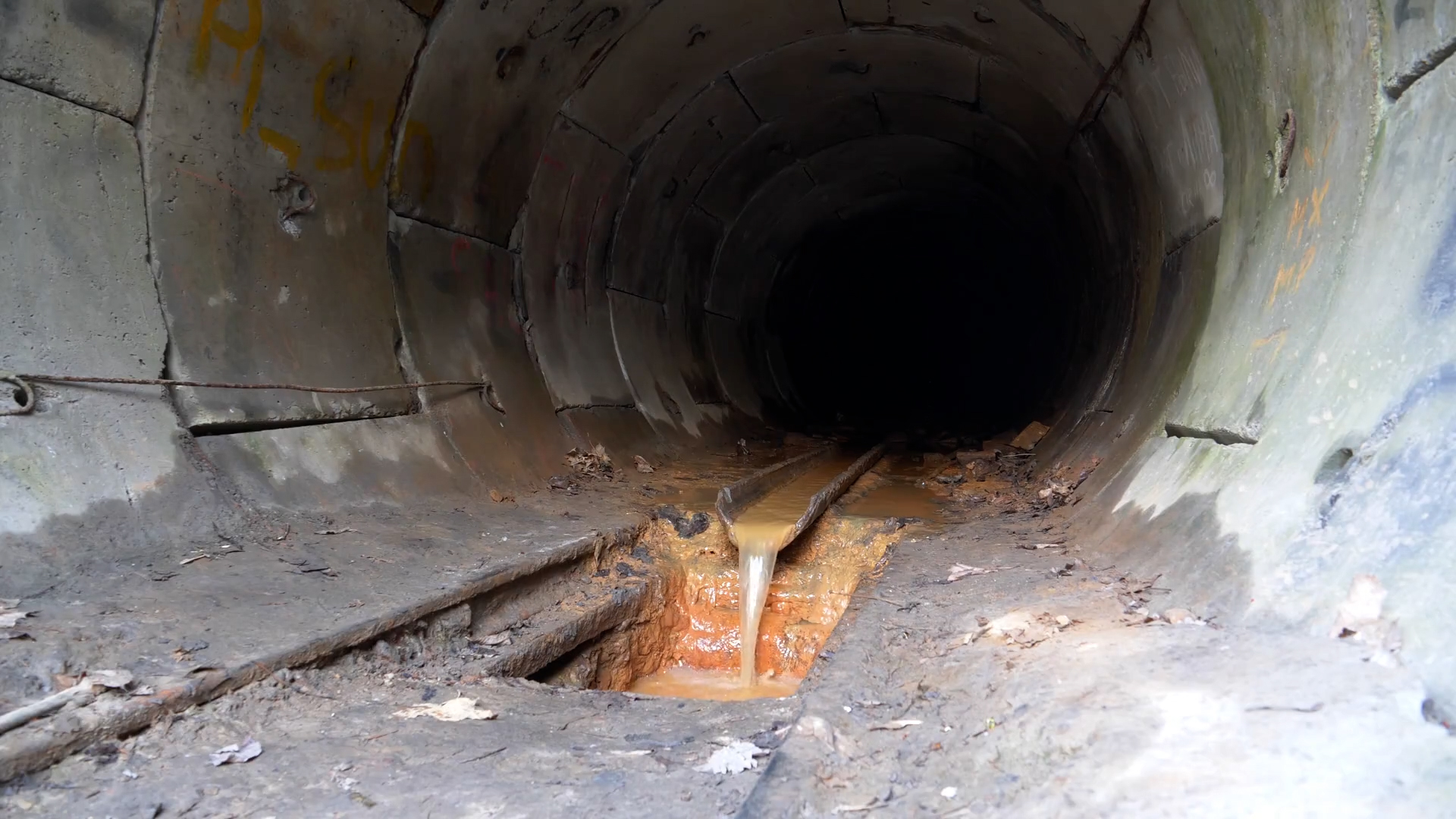
This story is part of a Great Lakes News Collaborative series investigating the region’s water pollution challenges. Called Refresh, the series explores the Clean Water Act’s shortcomings in the Great Lakes, and how the region can more completely address water pollution in the next 50 years.
Funded by the Charles Stewart Mott Foundation, the collaborative’s four newsrooms — Bridge Michigan, Circle of Blue, Great Lakes Now, and Michigan Radio — will report on overlooked pollutants as well as legal and institutional barriers preventing achievement of the Clean Water Act’s aspirational goals.
It started raining around 4 a.m. in Milwaukee on Sunday morning September 11. Throughout the day the rain kept coming. Kevin Shafer, executive director of the Milwaukee Metropolitan Sewerage District, was glued to his computer, with a dashboard showing the water levels at many points throughout the two deep tunnels and many pipes that carry rainwater and the city’s sewage to treatment plants. He flipped between the dashboard and the Green Bay Packers game, watching the Packers lose to the Minnesota Vikings 23-7 that afternoon.
The outcome on the sewer front was even worse.
“We held the storm, from 4 a.m. we held it” until close to midnight Sunday night, Shafer recalled, and then the situation became critical. “We were watching the inflows come up and down at different locations, we tried to send as much flow to the plants as we could to get it treated and back out, but eventually it just filled up. We had to open the gates.”
Milwaukee, like many cities around the Midwest and Northeast, has combined sewer systems where “sanitary sewage” from households is mixed with rainwater from storm sewers. This means that during heavy rain, the system can become overwhelmed and untreated sewage needs to be released into rivers or lakes. That’s what Shafer and his colleagues did in the wee hours of Sept. 12, when almost 400 million gallons of sewage were testing the capacity of the deep tunnels built to store it.
The situation would have been much different if Milwaukee had not been among the leaders in adopting “smart sewers,” a “neural network” as Shafer said, of sensors throughout the system that show the level of water at any moment, paired with modeling software that allows the district to predict based on past data and other factors how quickly and how much water will keep coming. That system, which Shafer was monitoring during the September storm, also allows Shafer and his colleagues to operate pumps remotely, channeling water through the system to the treatment plants.
Milwaukee’s wastewater district needs to negotiate a delicate balance wherein they handle a flush of water from the combined sewers during storms but need to also reserve storage capacity for overflow from the system’s separated sanitary sewers, an influx which typically hits six to eight hours later. Before the smart technology, the district usually ended up erring on the side of caution and reserving more space than ended up being needed – hence releasing combined sewage into waterways when it wasn’t actually necessary.
“Before we would fill it up to 200 million gallons and then automatically have an overflow because we didn’t know what the future was holding,” Shafer explains. “In the late ‘90s after the tunnel came online, we’d have an overflow when the tunnel was only half full. There was public outcry because we spent all this money [on the tunnel] and we’re only using half the investment.”
Now, the real-time sensors and prediction modeling let Shafer know what the coming hours hold, so he can potentially fill the tunnel up to near-capacity with confidence.
“It’s brought us real-time control so we can make a decision on real data at the time it needs to be made,” Shafer said. “It has reduced overflows because we can predict how much water is coming in in the future.”
Such “smart sewer” technology is increasingly common in the Great Lakes region, helping cities and towns like Milwaukee avoid combined sewer overflows that release untreated sewers into lakes and rivers. And since such systems are made up primarily of digital technology – sensors and software – they are relatively affordable and help public agencies avoid the million-dollar-costs and copious greenhouse gas emissions that would result from expanding wastewater hard infrastructure.
Milwaukee installed sensors and software starting around 2004, and a public interface that allows residents to watch what’s happening with storms and sewers debuted a decade ago.
Around that same time, the city of South Bend was struggling to reduce its combined sewer overflows, which were sending hundreds of millions of gallons of stormwater and sewage into the St. Joseph River per year. A federal consent decree signed in 2012 after years of negotiations mandated reductions, and the city embarked on a sewer upgrade plan expected to cost half a billion dollars and entail “nine pieces of infrastructure, seven CSO storage tanks, and two micro-tunnels,” as Kieran Fahey, director of South Bend’s Long-Term Sewer Control Plan, described it.
After a smaller first phase of the project was finished, Fahey said, “we realized this is just insane. This will cost way more than the $509 million and will be more disruptive to the community than we anticipated. It was going to be a billion dollars, in a city of 100,000 people,” where one in five people are living in poverty.
“We had to basically pause the work, and say we can’t do phase two as planned, it was too much of a price tag,” said Fahey, a native of Ireland who previously worked in environmental enforcement there. “We spent a couple months trying to come up with traditional civil engineering solutions.” But there was no way to slash the costs enough.
Researchers at the University of Notre Dame who were working on sensors for military and other applications had approached South Bend leaders with the idea of putting sensors in sewers, Fahey said. A first round of sensors helped officials get a real-time view of the system, and with that information leaders realized that sewage could be redirected and storage could be prioritized depending on how rain was falling and sewage flows were materializing in real time across a sprawling 42-square-mile area home to 600 miles of wastewater pipes.
“We put in smart valves which talk to all the other smart valves,” Fahey noted. “It decides I need to open or need to close, or half open or half close, it is bartering with all the other smart valves.”
When the smart technology was fully implemented, combined sewer overflows were reduced from two billion gallons in 2020 to 399,000 gallons in 2021, Fahey said, “without building anything, just reimagining the usefulness of our existing infrastructure.”
South Bend still needs to reduce its CSOs, and build new infrastructure, but information provided by its smart sewers has allowed the city to revamp plans.
“We have [over] 150 sensors each taking a reading every 5 minutes – that’s a whole lot of information you can use” to predict future conditions, Fahey noted. “Normally when you’re developing sewer infrastructure you’re using a model – how much is it likely to rain, what are ground conditions like when it falls, will the soil be saturated, how much will make it into the sewer system, how much will stay in the sewer. As an engineer you’re being conservative in your estimates. By the time you get to the final calculation, you have compounded uncertainty because you have so many safety valves in your calculations. Instead of what might happen, we looked at what did happen. We were able to use data from the past to plan for the future.”

South Bend, Indiana has 600 miles of sewer pipes. (Photo Credit: Great Lakes Now)
Last year, the city signed a new consent decree with the federal government based on the new plans and information. “Because our approach was so novel and different, it took us quite a while to overwhelm the authorities and regulators with enough evidence to show that while we were making a dramatic decrease in dollar amount, we were making a big increase in the environmental impact,” Fahey said. “We were able to take that billion-dollar plan down to a quarter billion, going from 30 million gallons storage down to 10 million gallons, from nine pieces of infrastructure down to three pieces.”
Nineteen public meetings were held regarding the plan, Fahey said, and while residents had been divided and upset about the previous plans and spending to reduce CSOs, there was widespread support for the new, smart sewer approach.
Both South Bend and Milwaukee contract with the Washington D.C.-based company Xylem, which has been a leader in the market, though more companies are now developing smart sewer technology, Xylem client solutions manager Nicole Pasch said.
She explained Xylem sewers’ strategy as similar to a “market-based” approach, wherein the smart infrastructure automatically knows how to “buy, sell, trade” its available storage space between different parts of the system.
“If one area has more capacity and another is hitting surcharge status, our algorithm will say how can we start diverting flows,” she explained. Since most sewage systems are driven by gravity, some new pumps or other infrastructure may be necessary.
“This puts a digital system on top of what already exists,” she said. “We might need some improvements to move water, so how do we make sure it’s affordable.”
While sensors and predictive software are becoming more and more common across the Great Lakes region and beyond, researchers, companies and cities are taking smart technology to a higher level. Shafer noted that the city is looking into “self-healing” smart sewer technology, which would allow pipes to essentially repair themselves. Pasch noted that making wastewater handling and treatment more energy efficient is a key focus, especially since energy-intensive wastewater treatment is responsible for a significant portion of greenhouse gas emissions worldwide.
Among other things, smart wastewater treatment could more precisely identify exactly what contaminants are in the wastewater, and tailor treatment accordingly, avoiding over-using energy and funds on unnecessary treatment.
“Everyone is facing new challenges,” Pasch said. “If anyone wants a dependable, reliable, safe water system, we need to prioritize digital investments. [Smart sewer technology] makes us more resilient in the face of climate change, floods and droughts, and makes it more affordable.”
Catch more news at Great Lakes Now:
After Decades of Neglect, Bill Coming Due for Michigan’s Water Infrastructure
Reduce flooding from backed up sewers? There’s an app for that
Featured image: More than 150 cities in the Great Lakes region like South Bend, Indiana have combined sewer systems. (Photo Credit: Great Lakes Now)
1 Comment
-
Milwaukee still has overflows, has anyone asked mmsd if they plan to adopt the same type of technology deployed in South Bend?




